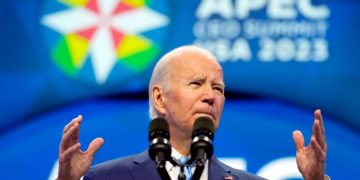Market Dynamics:
Assessing Impacts of the Fed’s Interest Rate Decisions
On September 18th, the aftershocks of the Federal Reserve’s decision to taper the federal funds rate by 50 basis points rippled through the commodities landscape. As a result, Brent crude futures climbed to $71.27 per barrel, and WTI crude nudged up to $73.95 per barrel by the close on September 20th. However, this rebound in prices proved underwhelming compared to their positions at the start of the month.
Industry Forecasts:
OPEC’s Projections Amidst Adjusted Global Demand
In its September forecast, OPEC cut its daily increase prediction for 2024’s global oil demand to two million barrels, a slight dip from the previously anticipated 2.11 million barrels. Further tempering expectations, global oil demand growth for 2025 is now pegged at 1.74 million barrels per day, adjusted down from 1.78 million. Concurrent downgrades by the U.S. EIA and International Energy Agency likewise contributed to the softened outlook, pressuring crude futures to reach multi-year lows.
Strategic Shifts:
OPEC+ Decides to Maintain Production Cuts
Amidst market anticipation, the “OPEC+” alliance laid to rest rumors of delayed production increases. As declared on September 5th, OPEC+ concurred on extending the existing voluntary production cut of 2.2 million barrels per day until November. This marks a stark pivot from earlier plans to incrementally elevate production through Q4. The continued intention to guard against steep price declines overrides the original stance to step up output this quarter.

Market Reactions:
Parsing Investor Response to OPEC+ Adjustments
On the trading floors, OPEC+’s maneuvers have historically aimed to prop up oil prices—with such action apparent as early as November 2023, extended through this past June. Despite these efforts, the latest postponement’s potentially bullish effect was undercut by the specters of increased Libyan supply and a slumping demand outlook in Asia and the US. A fleeting price rally on September 5th was short-lived, reinforcing investor skittishness against a backdrop of protracted declines.
The Road Ahead:
Navigating Forthcoming Policy and Market Terrains
As we approach year-end, multiple factors may recalibrate OPEC+’s grip on oil price dynamics. The crux lies in striking a new equipoise between price stability and market share in the face of American production strides, member states’ fiscal imperatives, and geopolitical undercurrents. Moreover, the Federal Reserve’s loosening monetary policy might offer transitory respite for oil prices, yet the substantive influence may remain demarcated.
Economic Indicators:
Considerations Amidst Mixed Economic Signals
The latest economic releases—spanning employment figures, PMI indices, and select corporate earnings—cast a shadow over US consumer spending, exacerbating bearish outlooks for the global economy and petroleum demand. With European PMI languishing in contraction and US employment indicators showing slack, the mood surrounding oil markets persists in its somber timbre.
Conclusion:
Charting a Course Through Fiscal and Geopolitical Tides
In the coming quarters, OPEC and its allies must tread a nuanced line through the intersecting arenas of market forces, fiscal requirements, and geopolitical considerations. As the demand forecast softens, the question looms: Will OPEC+ maintain its reduction agenda, or will the coalition opt for a strategic output recalibration in the face of fractionating global dynamics? The horizon speaks of a balancing act navigated with vigilance, aiming to steady oil prices against the ever-present swells of economic and political volatility.































